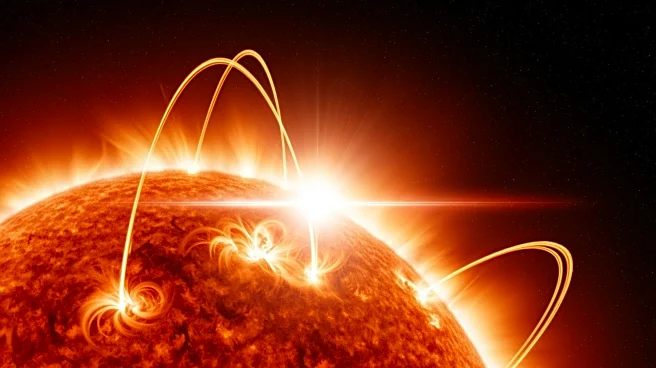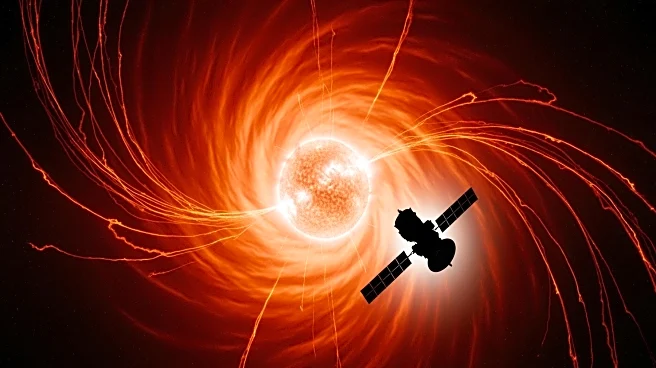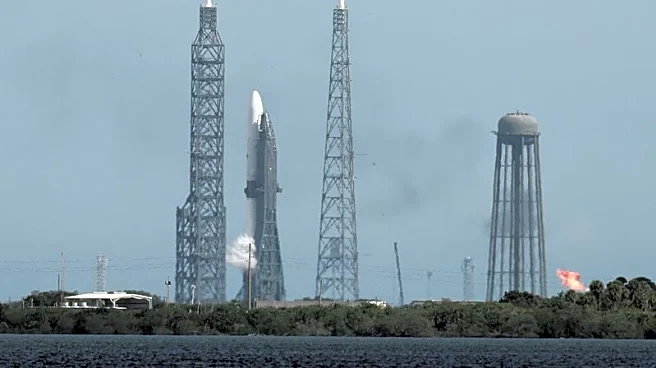What's Happening?
NASA's Solar Dynamics Observatory captured a strong solar flare on November 14, peaking at 3:30 a.m. ET. The flare, classified as an X4.0, represents one of the most intense types of solar flares. Solar flares are powerful
bursts of energy that can affect radio communications, electric power grids, navigation signals, and pose risks to spacecraft and astronauts. The observatory's image shows the flare in extreme ultraviolet light, highlighting the hot material involved. NASA continues to monitor the Sun's activity and its effects on space weather through a fleet of spacecraft dedicated to studying solar phenomena.
Why It's Important?
The occurrence of strong solar flares has significant implications for various sectors reliant on satellite communications and electrical infrastructure. Disruptions in radio communications and navigation systems can affect aviation and maritime operations, while power grid disturbances can lead to outages. Additionally, the safety of astronauts and spacecraft is a concern due to increased radiation exposure. Understanding and predicting space weather events are crucial for mitigating these risks and ensuring the reliability of technological systems that depend on space-based assets.
What's Next?
NASA, in collaboration with NOAA's Space Weather Prediction Center, will continue to monitor and forecast space weather events. These efforts aim to provide timely warnings and alerts to industries and government agencies affected by solar activity. Ongoing research and observation will enhance predictive models, improving preparedness for future solar events. Stakeholders in telecommunications, energy, and transportation sectors are expected to adapt their strategies to mitigate potential disruptions caused by solar flares.
Beyond the Headlines
The study of solar flares contributes to broader scientific understanding of the Sun's behavior and its impact on the solar system. Insights gained from observing these phenomena can inform the development of technologies to protect satellites and spacecraft from radiation damage. Additionally, the research supports advancements in space exploration, as understanding solar activity is vital for planning missions beyond Earth's orbit.













